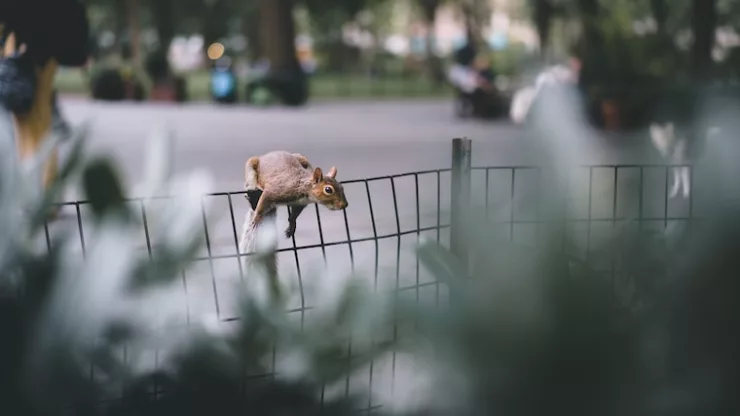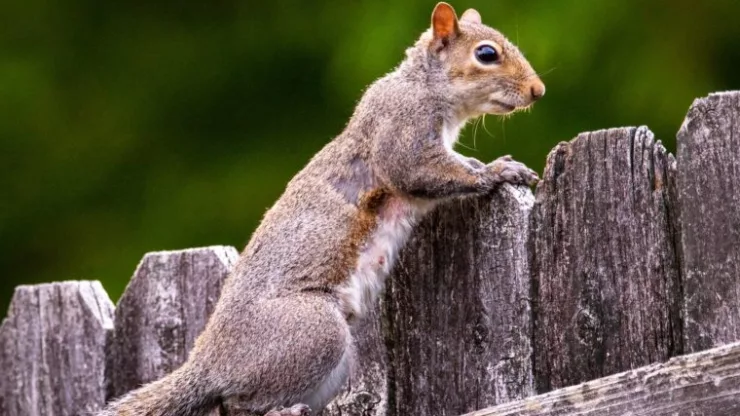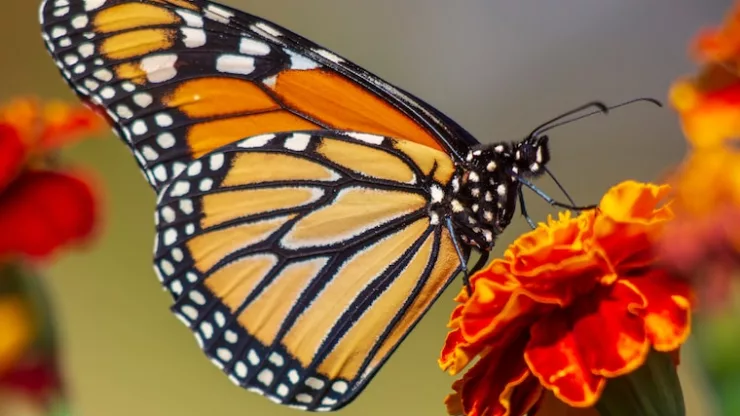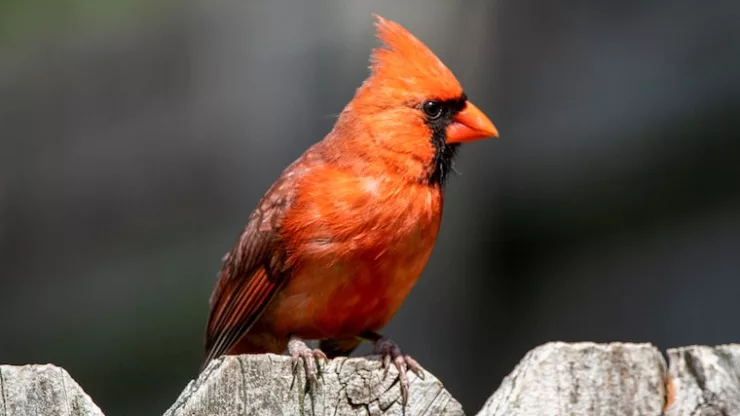Jump to Section
Introduction
Brief Overview of Urbanization and its Impact on Wildlife
Over the last century, rapid urbanization has had a profound impact on wildlife populations around the world.
As cities have expanded, many species have been displaced from their natural habitats or forced to adapt to life in urban environments.
This has created new challenges for urban wildlife, including increased exposure to pollution, disease, and habitat fragmentation.
Introduction to Urban Squirrels and Their Unique Adaptations for City Life
One of the most successful examples of wildlife adaptation to urban environments is the common squirrel.
Squirrels are found in cities all over the world and have adapted a range of behaviors and physical traits that allow them to thrive amidst the concrete jungle.
While it is easy to dismiss squirrels as mere pests or nuisances, a closer examination reveals an intriguing story of resilience and survival.
In this article, we will explore the secret lives of these fascinating creatures – their diet, behavior patterns, reproductive strategies and much more – with a focus on how they have adapted to life in our modern cities.
The Urban Environment
Characteristics of urban environments that affect squirrel populations
Urban environments are characterized by a high density of human infrastructure and activities.
These can have both direct and indirect effects on squirrel populations.
One major direct effect is the loss of natural habitat due to land development.
As cities expand, they often encroach upon surrounding woodlands, reducing the amount of available space for squirrels to forage, nest, and breed.
Additionally, urban areas typically have more predators than rural areas due to the presence of domestic cats and dogs, which can prey on unsuspecting squirrels.
Indirect effects include increased levels of pollution from traffic and other sources.
This can lead to changes in soil quality and negatively impact food sources such as nuts and seeds that squirrels rely on.
Noise pollution can also be a problem, as it can disrupt communication between squirrels and make it more difficult for them to detect predators.
How squirrels have adapted to these environments
Despite these challenges, squirrels have shown remarkable adaptability in urban environments.
One key adaptation is their ability to exploit human-made structures such as buildings, bridges, and power lines as pathways for travel and nesting sites.
Squirrels have been known to enter buildings through openings such as attic vents or broken windows in order to establish nests out of reach from predators.
Another adaptation is their ability to exploit non-traditional food sources such as discarded food items or bird feeders found in parks or residential areas.
They are also highly opportunistic feeders who will adjust their diet based on what is available at any given time.
Urban squirrels have developed behaviors that help them avoid human-related hazards such as crossing roads safely or avoiding contact with domesticated pets.
These adaptations demonstrate not only their resilience but also their intelligence in navigating novel environmental challenges posed by an increasingly urbanized world.
Diet and Foraging
Urban Menu: What Squirrels Eat in the City
As natural habitats are pushed away by urbanization, squirrels have been forced to adapt their dietary habits to survive in the city.
The most common food sources for urban squirrels include nuts, seeds, fruits, and insects.
However, these foods may not always be available or accessible in an urban setting.
Therefore, squirrels also rely on human-produced food sources such as garbage and bird feeders for their daily sustenance.
Studies have shown that urban squirrels tend to have a more varied diet than their rural counterparts due to the abundance of food sources available in the city.
This variety includes non-native plant species that have been introduced into urban environments.
As a result, urban squirrels are less likely to experience nutritional deficiencies than rural ones.
Adapting Diets: How Squirrels Survive on Human Food
In addition to natural foods, human-produced food sources play a critical role in squirrel survival in the city.
Urban squirrels have learned how to access bird feeders and garbage cans by chewing through plastic lids or raiding open containers left outside by humans.
Squirrels that consume human food may face health risks such as obesity or malnutrition from consuming unbalanced diets.
However, studies have shown that some squirrel populations have developed unique digestive systems that help them better process human foods.
For example, some urban squirrel populations have higher levels of amylase enzymes compared to their rural counterparts— an adaptation that allows them to break down complex carbohydrates found in processed foods like bread and pastries.
While human-made food sources can provide necessary nutrition for survival for squirrels living in the city environment, they must also learn how to balance this with natural foods if they want a balanced diet and avoid health-related issues associated with consuming processed food.
In upcoming research, it could be worth investigating the long-term effects of urban diets on squirrel health.
Social Behavior
Overview of Squirrel Social Behavior
Squirrels are social animals that live in communities, sharing both resources and social space.
Their social behavior is fascinating and complex, with much still unknown about how it operates.
Squirrels communicate with each other through a variety of vocalizations, body language, and scent marking.
They use their tails to signal danger or aggression and will bark at intruders to warn the community.
Within squirrel communities, there is a strict hierarchy based on age and size.
The older, larger squirrels tend to be dominant over younger ones, often getting first access to food resources or prime nesting locations.
Younger squirrels must learn from the older ones how to navigate the community dynamics.
Comparison of Social Behavior in Urban vs Rural Squirrel Populations
The social behavior of urban squirrels differs from their rural counterparts in several ways.
In cities where food resources are abundant year-round, there tends to be less competition for resources than in rural areas where food availability can fluctuate with seasonal changes.
As a result, urban squirrels may not adhere as strictly to the hierarchy seen in rural squirrel communities.
Furthermore, urban squirrels have been observed relying more heavily on human-provided food sources rather than natural ones.
This has led some researchers to speculate that urban squirrels may be less reliant on their own resourcefulness when it comes to procuring food which could lead them towards adopting different behavioral patterns from rural populations over time.
Overall, studying the social behavior of urban squirrels is crucial for understanding how these creatures adapt and thrive in human-modified environments.
Reproduction and Survival
Urban Squirrel Reproductive Strategies
Urban squirrels have unique reproductive strategies that allow them to thrive in the city.
One of these strategies is rapid reproduction.
Female urban squirrels typically have two litters per year, with each litter consisting of 3-4 offspring.
This allows for a higher population density in urban areas compared to rural areas.
Another strategy is flexibility in mating behavior.
Urban squirrel populations often have a higher proportion of males than females, which can lead to competition for mates.
As a result, male urban squirrels may engage in same-sex mating behavior or mate with multiple females to increase their chances of passing on their genes.
Another interesting aspect of urban squirrel reproduction is the effect of environmental factors on reproductive success.
Studies have shown that temperature and weather patterns can impact the timing and success of breeding in urban squirrel populations.
For example, warmer temperatures can lead to earlier breeding seasons while colder temperatures may delay breeding.
Factors Affecting Survival Rates in the City
Survival rates for urban squirrels are influenced by a variety of factors including food availability, predation risk, and exposure to human activities such as traffic or construction.
Food availability plays a crucial role since it directly impacts energy levels and overall health.
Urban squirrels have adapted by diversifying their diets, feeding on a wider range of foods including birdseed and human-provided food sources such as garbage.
Predation risk also affects survival rates since predators such as birds of prey or domestic cats are more prevalent in cities than in rural areas where trees provide better protection from predators.
However, some studies suggest that increased exposure to predators may actually enhance survival rates by selecting for individuals with better escape abilities or heightened awareness.
Human activities such as vehicle collisions or habitat destruction can also impact survival rates for urban squirrels.
Exposure to pollutants such as heavy metals and pesticides can also have negative effects on squirrel health and survival.
Despite these challenges, urban squirrels have shown remarkable resilience and adaptability in the face of increasing urbanization.
Human Interaction
Impact of Human Behavior on Squirrel Populations
The rapid urbanization has led to an increase in human population and development. As a result, natural habitats have been replaced with urban landscapes, greatly affecting wildlife populations.
In the case of urban squirrels, the impact of human behavior on their populations can be seen in different ways.
For one, people often provide food for squirrels either intentionally or unintentionally which leads to overpopulation in some areas and malnutrition in others.
This can result in competition for resources such as food and nesting sites leading to aggressive behavior.
Moreover, humans are the main source of squirrel mortality in cities due to car collisions, attacks by domestic pets or even intentional harm done by humans.
Noise pollution also affects squirrel communication and alters their behavior patterns.
Therefore, understanding how human behavior affects squirrels is important for conservation efforts as it helps identify measures that can be put in place to reduce human-squirrel conflict.
How Squirrels Have Adapted to Human Presence
Despite the challenges posed by human activities such as noise pollution and habitat destruction, squirrels have proven themselves highly adaptable creatures and are able to coexist with humans quite well.
One way they have adapted is through behavioral plasticity – altering their behaviors based on environmental conditions.
For example, squirrels tend to become more active at night when there are fewer people around so they can forage without interference.
They also seek shelter on buildings such as attics or roof spaces which mimic tree cavities where they typically nest in natural environments.
Another way squirrels have adapted is through habituation – becoming used to human presence through frequent exposure – allowing them to take advantage of available resources such as bird feeders provided by humans while still being wary enough not to be exploited or harmed.
Despite facing challenges from urbanization, squirrels have adapted to the human presence in cities through plasticity and habituation.
By continuing to study their behavior and understanding the impact of human actions on their populations, we can work towards better conservation efforts that preserve the natural world even in urban environments.
The Importance of Understanding Wildlife Adaptation
Understanding how wildlife adapts to urban environments is crucial for ensuring their continued survival as well as maintaining a healthy ecosystem within our cities.
By studying how squirrels are able to overcome challenges such as habitat loss, food scarcity, and encounters with humans, researchers can gain insight into how other species might be able to do the same.
This knowledge can inform conservation efforts aimed at protecting wildlife populations both inside and outside of urban areas.
Moreover, recognizing that there are still thriving populations of wild animals living among us can remind us that nature is not always found only in pristine wilderness areas.
The resilience demonstrated by urban squirrels can serve as a source of inspiration for individuals working towards creating more sustainable urban environments that prioritize coexistence with nature rather than its exclusion.
Ultimately, understanding how wildlife adapts to city life will help create healthier and more livable communities for both humans and animals alike.
Conclusion
Urbanization has undoubtedly had a profound impact on wildlife populations around the world.
However, as our cities continue to expand, some species have managed to adapt and thrive in these increasingly urban environments.
One such species is the humble squirrel, whose intelligence and resourcefulness have allowed them to successfully navigate the challenges of life in the city.
Through adaptations in their behavior, diet, and social structures, squirrels have proven themselves capable of surviving even amidst the concrete jungle.
I’m a nature enthusiast and creator of Metro Wilds and have spent years exploring the great outdoors.
With a passion for environmental conservation and sustainability, I have dedicated my career to writing about the beauty and wonders of nature, as well as the threats facing our planet.
Contact me at [email protected] for assistance.





